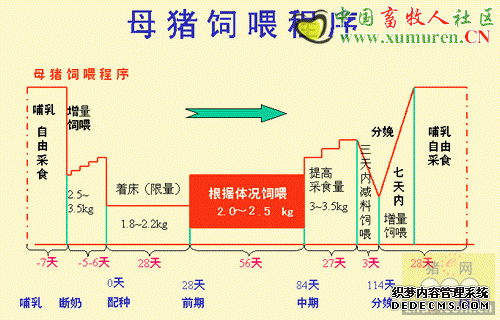By Crystal Levesque, M.Sc., John F. Patience, Ph.D., Ruurd Zijlstra, Ph.D. and Eduardo Beltranena, Ph.D. - The weaning period is often associated with problems such as low feed consumption andreduced growth rate. Management of the weaned pig requires special attention to housing,environment and nutrition to reduce the postweaning growth lag and to maximize performance.
Introduction
Environmental stressors such as weaning site, stocking density and group size can further reduce feed intake and thus the growth rate of weaned pigs. Understanding how the piglet responds to changes in environment and dietary nutrients will lead to improved piglet management and performance.
Physical gut capacity is assumed to be the primary limitation in growth in the young pig because it limits their daily feed intake and hence, daily energy intake. Due to this limitation, nutrients in the weaned pig diet are formulated as a ratio to energy. As a result, increasing theenergy density of the diet subsequently increases dietary levels of other nutrients (i.e. aminoacids). Although increasing the energy density of weaned pig抯 diets is used as a method toimprove piglet performance, the information available in the current literature on the response of the weaned pig to changes in dietary energy density is inconclusive.
To quantify the effectiveness of increasing energy density as a method to improve weaned pig performance, a study was designed where groups of similar pigs were provided diets ranging in digestible energy (DE) content. Crowding and weaning site were chosen as environmental stressors that can affect growth of the weaned pig and may affect the response of the pig to dietary energylevels. It has been well established that weaning pigs to an off-site nursery improves pigletperformance and may be due to a reduced pathogen exposure or lower immune response.
Recent work at the Prairie Swine Centre has shown that crowding pig抯 in the nursery canreduce piglet performance to 70 days of age.
One experiment was completed using 252 pigs weaned at 17 days of age to an on-site or an off-site nursery and provided diets of 3,350, 3,500 or 3,650 kcal DE/kg. A second experiment conducted at the PSC Elstow Research Farm using 600 pigs weaned at 19 days of age, provided diets with a DE content of 3,190, 3,330, 3,460, 3,610 or 3,750 kcal DE/kg and space allowance of 0.26 and 0.32 m2/pig.
The results of the study showed that increasing the energy density of the diet did notimprove piglet performance and that the response to dietary energy was not affected byweaning site or crowding. In both studies, feed efficiency improved as the DE content of the dietincreased. In the first experiment, the large increase in feed intake (Chart 1) in spite of the lower feed efficiency resulted in greater daily gain for pigs on the lowest energy diet (chart 2). In the second experiment, feed intake increased slightly as the DE content decreased (Chart 1) but no difference in pig daily gain was observed (Chart 2).
Based on a 3 year (1999 to 2002) average price, the cost of the diets in the first experimentranged from $267.48 to $327.06/tonne and from $352.15 to $404.11 in the second experimentimproved feed efficiency with increasing energy density was not sufficient to offset the increased cost of the diets. The cost per kg gain increased from $ 0.38 to $ 0.44/kg gain as the energy density of the diet increased in the first experiment and from $ 0.48 to $ 0.51/kg gain in the second experiment.
The Bottom Line
In young pigs (10 to 25 kg BW) with free access to feed, the limitation to growth is not due togut capacity within the dietary digestible energy range of 3,350 to 3,650 kcal DE?kg-1.
Increasing the energy density of the diet did not result in an improvement in pig performance in relation to daily BW gain or protein deposition. It appears that growth limitations in the young pig are not overcome simply by increasing the dietary energy level. The reason for the lack of response to increasing dietary DE level is not clear; however, the source of energy and the CP content of the diet may play important roles in how efficiently the dietary energy is utilized.
Chart 1:
Average daily feed intake from 25 to 56 daysof agein weaned pigs
on diets ranging in DE content from 3,190 to 3,750 kcal DE/kg.
声明
来源:互联网
本文地址:http://farm.00-net.com/yz/zhu/5/2007-09-20/142400.html








